*This blog post by Jennifer Lowell is reprinted by permission from her article in the Spring 23 issue of Collage, the Journal of the Colorado Art Education Association.
Those who contemplate the beauty of the earth find reserves of strength that will endure as long as life lasts. —Rachel Carson
As I walked my daily walk in the nearby park one day, I contemplated how much my students needed this very experience, this walking, this contact with nature, listening to the leaves in the trees, watching the light fall on the grasses and bark, smelling the rich earth, touching the cool water in the creek and tasting the sweet air all around! I began to imagine my students on the very path I was walking, enjoying the outdoors. While I planned to inquire about the possibility of them coming to the park, I wondered how I could bring nature to them in the meantime.
I have always had a space in my art room full of trays of natural items, the usual rocks, seeds, shells, sticks, feathers, and all the 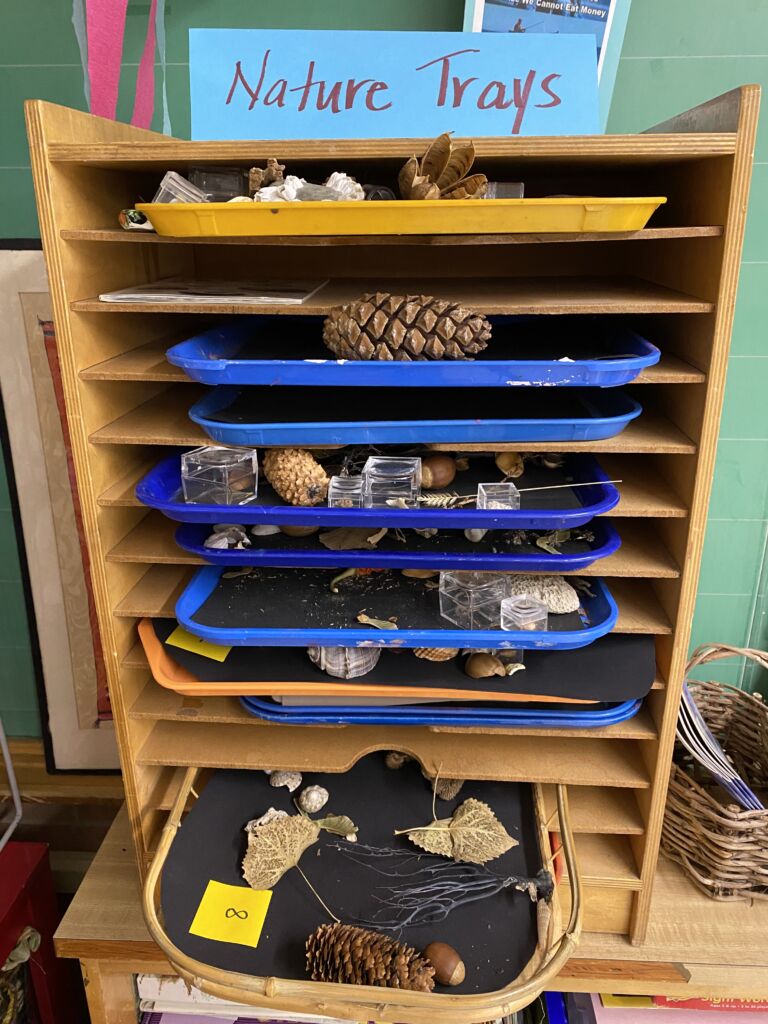 wee objects I collect from hikes. I keep these accessible with magnifying glasses. All year long I am constantly adding things, a new pod, a fossil, a pinecone. When people hear I collect these things, they offer their findings, a butterfly, a snakeskin, an ostrich feather, to share with the kids. The collections have a life of their own! I decided I would create a whole set of trays that would be placed at the students’ tables with little magnifying glasses for each student and see what kinds of artwork they might be inspired to create after closely observing natural items and noticing the lines, forms, shapes, colors, values, textures and space they embodied.
wee objects I collect from hikes. I keep these accessible with magnifying glasses. All year long I am constantly adding things, a new pod, a fossil, a pinecone. When people hear I collect these things, they offer their findings, a butterfly, a snakeskin, an ostrich feather, to share with the kids. The collections have a life of their own! I decided I would create a whole set of trays that would be placed at the students’ tables with little magnifying glasses for each student and see what kinds of artwork they might be inspired to create after closely observing natural items and noticing the lines, forms, shapes, colors, values, textures and space they embodied.
I created a lesson in which students would simply spend the first 15 minutes just looking at the objects and sharing their observations with each other. It was fascinating to watch and hear their comments. The students each held their own magnifying glass, picked up the natural objects and looked at them closely. “What is this? This is so cool!” exclaimed the students excitedly to each other.
A common conversation would be something like this:
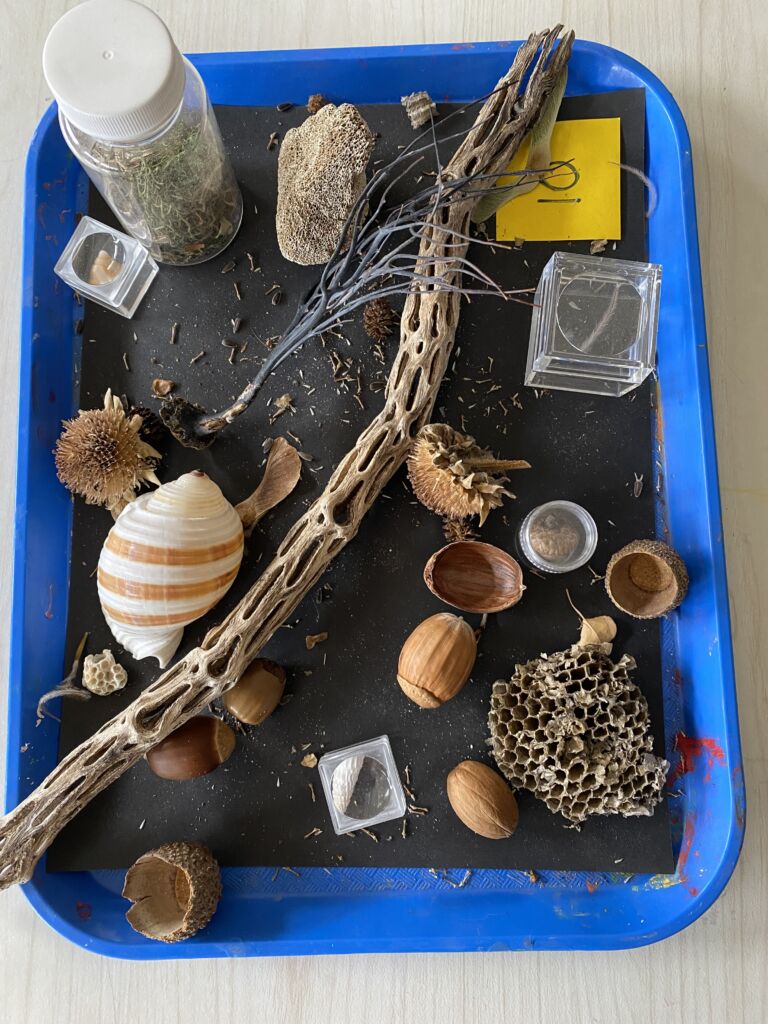 S: Is this a feather?
S: Is this a feather?
T: No, that is a piece of grain.
S: Is this a rock?
T: No, that is a seed pod.
The kids did not know many of the items on their trays. I realized they had not been exposed to these things. They were so amazed, excited and so filled with wonder. I was so happy to witness this, but sad at the same time as my suspicion of the students’ knowledge of the natural world being extremely limited was true. Of course, there were children who had been exposed to the outdoors, but way too many had not. I was looking at their ratios of outdoor time to indoor time. As I really contemplated it, I was shocked and dismayed.
We are all born sentient beings. As such, we live with a constant influx of information gained by our five senses that we exercise daily. If we begin a human’s formal education at the age of five with a scenario that puts a child going from inside a home to inside a school back to inside a home and repeat that daily five days a week with only small periods of recess or play outside, I conclude that we are literally depriving this small human of vital earth information that could be obtained by exercising their senses outdoors!
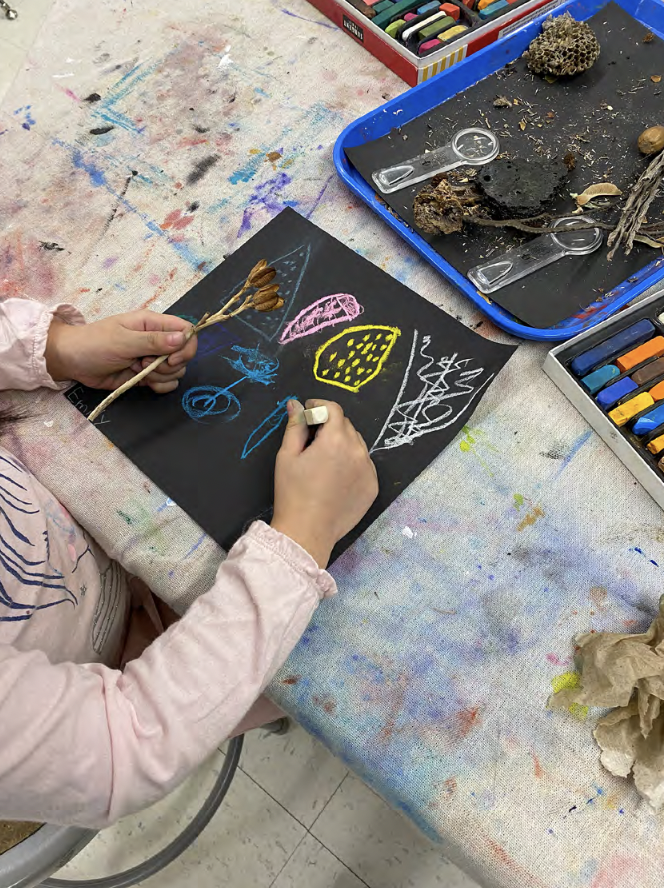 Exposure to nature is so important to my personal existence that I became adamant about providing it to my students. We went outdoors to make paintbrushes out of sticks. We played creating land art with rocks, grasses, sticks, acorns, and a basket of shells. We used our nature trays to inspire us to create designs using oil pastels, pencil drawings, and ink prints.We watched mushrooms grow as I ordered two kits (only to be gifted two more by the company when they realized I would be using them for children in a school)!
Exposure to nature is so important to my personal existence that I became adamant about providing it to my students. We went outdoors to make paintbrushes out of sticks. We played creating land art with rocks, grasses, sticks, acorns, and a basket of shells. We used our nature trays to inspire us to create designs using oil pastels, pencil drawings, and ink prints.We watched mushrooms grow as I ordered two kits (only to be gifted two more by the company when they realized I would be using them for children in a school)!
Finally, many months after my walk, we took buses to my local park and spent the day outside. Students ran and played by the lakes, found clay deposits by the shore, and walked on the trails. With grant money, I had purchased Polaroid cameras, and we spent the day taking nature photos at the park. One most challenging student enjoyed himself so much that he fell asleep on the bus on the way home. The day before I took the students to the park, I was walking my daily trail and thought “Oh no! Tomorrow 60 kids will be here in my peaceful refuge!!! What was I thinking?”
And tomorrow came, and they were angels. They were just where they needed to be. They were delighted and relaxed and they were full of wonder. We have spent a long time dumbing down our nation. We have deprived our students of a nature-filled childhood by keeping them inside instead, at desks, and isolated from an earth that has so much to teach them. We have stifled “wonder” with screens. Many children no longer really know the origins of the food they put in their mouths and are shocked when they learn! Our stronger-than-ever need for social-emotional learning can easily be met by spending more time outside, observing nature with or without a sketchbook, and just being. Just being whole with our sentient selves as humans meant to live on this earth, meant to learn from it. We are meant to learn about the flora and fauna around us. We are meant to learn the peace that can come from a walk as our thoughts gather and calm with the beauty that surrounds us.
Our youth today are subject to an enormous amount of violence and information that many are not able to process at such young ages. As an art teacher, attempting to give my students a moment in their day of peaceful self-expression, I believe giving them the opportunity to experience our natural world is my obligation. I will continue to seek out experiences for my students to be outdoors.
I truly believe that just by creating curriculum that incorporates nature studies we can make our humanity more compassionate, more gentle, and definitely more intelligent. The time has never been more needed than right now.


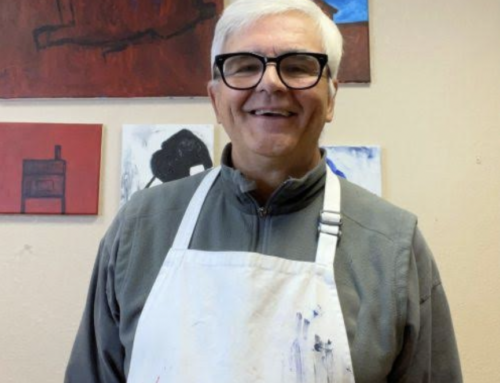

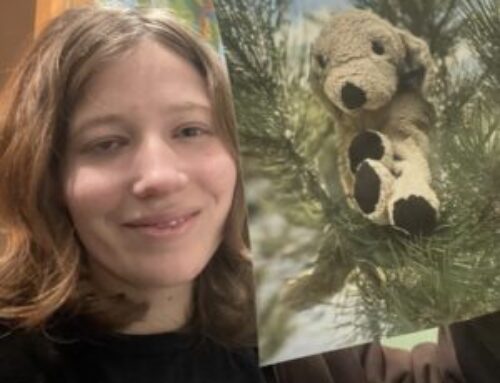


Leave A Comment